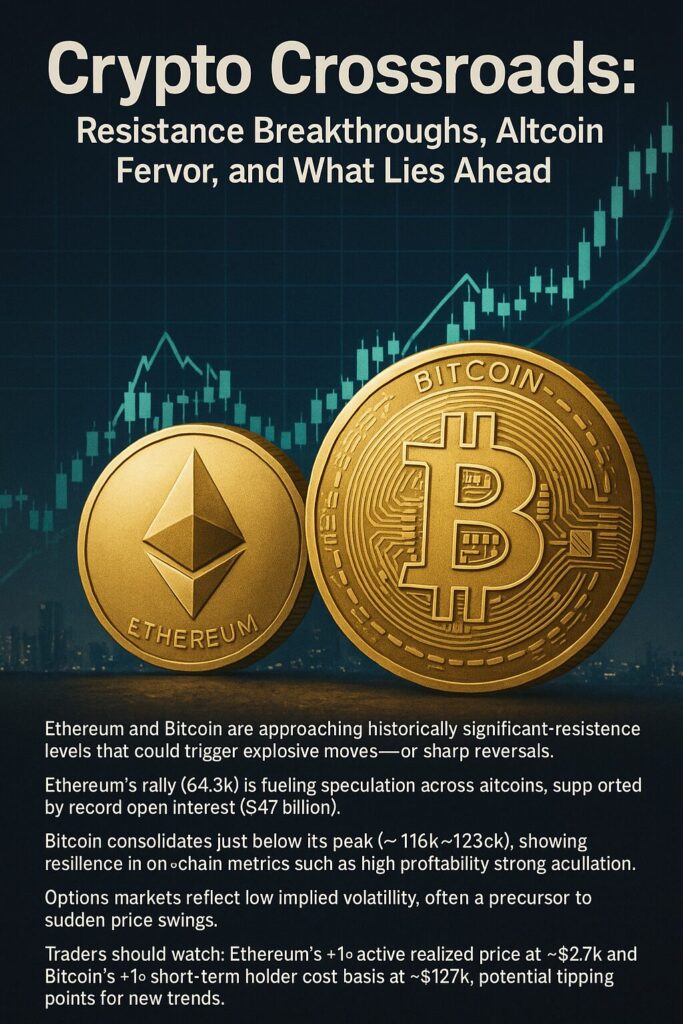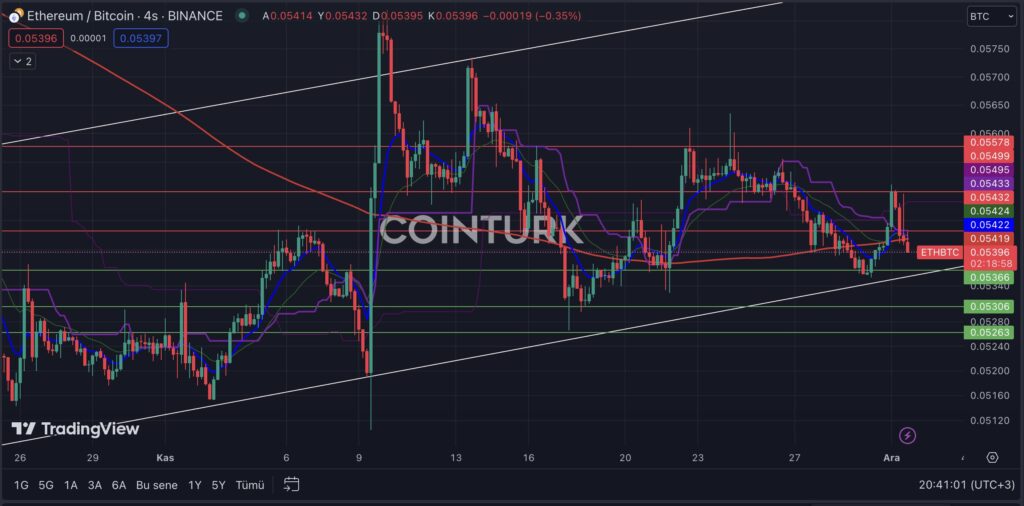
Main Points:
- Ethereum and Bitcoin are approaching historically significant resistance levels that could trigger explosive moves—or sharp reversals.
- Ethereum’s rally ($47 billion).
- Bitcoin consolidates just below its peak (~$116k–$123k), showing resilience in on-chain metrics such as high profitability and strong accumulation.
- Options markets reflect low implied volatility, often a precursor to sudden price swings.
- Traders should watch: Ethereum’s +1σ active realized price at ~$4.7k and Bitcoin’s +1σ short‑term holder cost basis at ~$127k, potential tipping points for new trends.
- Broad altcoin rallies and high leveraged positioning raise both opportunity and risk for investors.

1. Ethereum’s Relentless Rally and Altcoin FOMO
Ethereum has surged from around $1,500 in April to approximately $4,300, the highest since December 2021—but still about 12.5% below its all-time high of ~$4,828. This ascent is sparking heightened speculation across altcoins, reflected in a staggering open interest of $47 billion, signaling aggressive leveraged activity.
Image above: a chart illustrating Ethereum’s key support/resistance zones and overall structure, helping readers visualize levels where price action may stall or break out.
Ethereum is nearing its +1σ Active Realized Price around $4,700, a historically known area of increased selling pressure in 2024 and the 2020–21 cycle. A breakout above this could ignite a speculative frenzy; conversely, a rejection could lead to sharp pullbacks.
2. Bitcoin’s Poise Amid Consolidation
Bitcoin is consolidating in a tightened range, trading just under its recent all-time high of ~$123k. On‑chain data show that the vast majority of holders remain profitable, and short‑term holder losses during the pullback to ~$112k have been modest.
Its key resistance lies near the +1σ Short-Term Holder cost basis at roughly $127k, historically a cycle-high barrier. A strong breakout could open the path toward the +2σ level near $144k.
Some reports identify a “low‑liquidity air‑gap” below ~$116k—a zone where few coins have traded. While opportunistic buying may occur in this area, it also represents a risk if demand fails to return strongly.
3. Low Volatility, High Stakes
Options markets show exceptionally low implied volatility (IV) across tenors—traders aren’t expecting big moves soon. Historically, such quiet phases often precede sharp volatility spikes, making current conditions ripe for sudden swings.
4. Altcoin Market Heat and Diversifying Risk
Ethereum’s strength has catalyzed rallies in other top altcoins. In the past week:
- Ethereum: +25.5%
- XRP: +16.2%
- Solana: +13.6%
- Dogecoin: +25.5%
This surge reflects investors shifting beyond Bitcoin dominance (which dropped from 65% to 59%) toward riskier, potentially higher-return assets.
5. Strategic Outlook for Traders and Innovators
- Ethereum traders: monitor the $4,700 resistance closely. A clean breakout could drive speculative momentum; a failure may trigger volatility.
- Bitcoin watchers: a move above $127k would be bullish, possibly paving the way toward $144k—but watch for possible sell pressure.
- Options traders: low IV signals heightened potential; prepare for volatility expansions.
- Altcoin investors: current market structure favors selective risk-taking, but leverage and froth demand cautious position sizing and exit planning.
Conclusion
The crypto market stands at a pivotal juncture. Ethereum and Bitcoin hover near critical technical thresholds, with broader altcoin markets surging under speculative fervor. On-chain data suggest strong fundamentals—but low volatility and extreme leverage from open interest create a delicate backdrop. For those scouting new crypto opportunities or building real-world blockchain applications, disciplined monitoring of resistance levels, risk metrics, and sentiment shifts will be essential for navigating this high-stakes phase.

